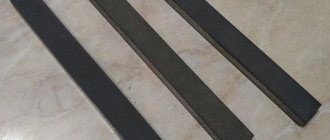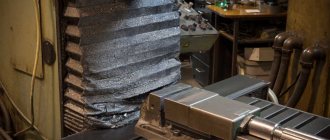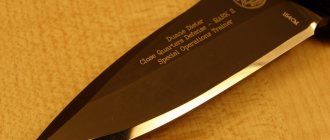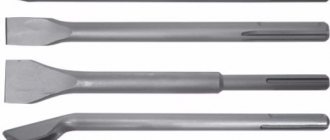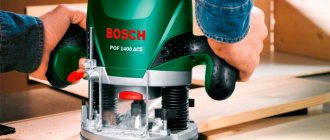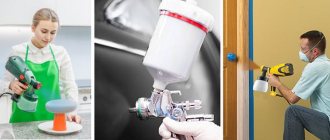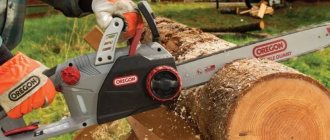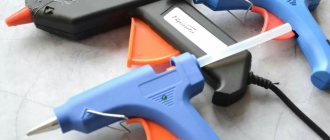Meet a new article from Arsenal Masters RU specialists. All about sharpening stones. Classification, types of stones. Recommendations and advice on the selection, storage and alignment of stones, and the process of sharpening tools.
There are many sharpening stones, it’s difficult to choose, and there are also many nuances and features. We have collected information on them and added tips and recommendations. We are waiting for your feedback, share your experience!
Classification of sharpening stones
There are synthetic and natural stones.
- Synthetic stones are divided according to the type of material into water, ceramic and diamond.
- Natural stones work with water or oil.
The wide selection of stones is also due to the different grain sizes of abrasive stones. This allows you to remove chips, remove minor damage, and bring the sharpened surface to “zero.” In practice, water stones are more often used.
The popularity of manual sharpening is easily explained:
- The hardness and edge of the steel does not deteriorate because no heat is generated.
- A huge selection of grain sizes allows for any fine sharpening.
- Precise cutting geometry (no rounded chamfer surfaces such as felt or rubber discs).
- No expensive equipment needed.
- In their practice, Masters reach perfection!
How to Make Dull Blades Sharp: Dull blades have a rounded edge on the cutting edge, therefore, when sharpening, it is necessary to remove material from the chamfer surfaces to again achieve the perfect “intersection” of the 2 planes of the blade chamfer.
Electrical equipment, light, lighting
0 votes
+
Vote for!
—
Vote against!
Many of us have gardens, vegetable gardens, we all use knives, scissors, chisels, drills, and we often have to sharpen garden tools, be it an ax or a shovel. In order not to spend a long time with sharpening by hand, you need to buy a special machine, which is called household emery. How to choose the right device, and what is recommended to pay attention to? Let's look into this issue now.
- Circle diameter
What is household emery
Emery is a black-green or green-colored rock used as an abrasive material, a mixture of magnetite and corundum. The highest quality emery is mined in Naxos, Galeika, Turkey and Greece. The peculiarity of emery as an abrasive material lies in the presence of fusible impurities, so it can only be used in products that do not require high temperatures for production, that is, on a cold bond.
An important indicator of emery is its abrasive ability, which depends on the corundum content in the rock. The highest corundum content is observed in chloritoid ores, but is 2-3 times lower than in very high-quality corundum ores. As a non-slip element, emery is most widely used for finishing floors, sidewalks and staircases.
A sharpening machine (emery) is a power tool designed for sharpening metal: drills, knives, axes, chisels and scissors, as well as saw blades. The main part of the sharpener body is occupied by an electric motor with a support, which is attached to the workbench using fasteners. The power supply of the device is turned on and off using a special button.
On both sides of the engine, 2 abrasive wheels are placed parallel to each other: one wheel with large grain sizes is intended for rough processing of the material, the other fine-grained one will be needed for fine processing. Abrasive wheels most often have a diameter of 150-250 millimeters and a thickness of 16-32 millimeters. They are partially located in a protective casing. The open part of the circle rotates from top to bottom. The object being sharpened rests on a special stand, the distance from it to the sharpening wheel can be adjusted, and it also rotates towards the wheel at a certain angle.
There are models of electric sharpeners that have a metal disk brush instead of one wheel for preliminary rough processing of the object. Also, some models have additional special slots for drills. To protect against sparks, a special transparent plate called a tap is installed on the electric sharpener. Also, some sharpeners are additionally equipped with a lamp to illuminate the working area of the sharpener.
The very effect of electric emery is that part of the material is removed from the surface being treated. The material usually has a crystalline structure, which wears out during operation in such a way that the smallest particles break off from it, and in their place completely new sharp edges appear, and all due to fragility.
What types of sharpeners are there?
The sharpeners on sale are divided into three classes: professional, semi-professional and household. Their main difference is reliability, which is ensured by the use of certain materials. The household tool is designed for two hours of daily use. Professional sharpeners are designed for constant daily work for 8 hours with mandatory 2 breaks, each 15 minutes. Semi-professional machines, of course, occupy an intermediate position between these two classes.
Also, each class has a wide selection of different designs and modifications of sharpening tools. Of course, these are not only ordinary machines with two circles of various diameters, but also with a non-standard arrangement of circles, for example, placed perpendicular to each other. The most versatile machine is one that is equipped with a sanding belt and a regular disc.
For home needs, a fairly inexpensive sharpener with low speeds is enough - about 120-150 revolutions per minute and a circle that is immersed in a bath of water, that is, “wet”, on which you can slowly give the required sharpness to the cutting and piercing tools in the house quite safely subjects. Such a small emery machine runs on AC power; grinding wheels with an outer diameter ranging from 150 to 200 millimeters and an average thickness of 20 to 40 millimeters are used as an abrasive tool.
There are also models that have an additional brush disk located on one side, most often on the right. It is intended for workpieces that have never been used as a cutting object. First, such a product is cleaned using a brush disk, that is, it is roughly sharpened, and then brought to the desired condition on a grinding wheel with fine grain. A brush disk is also used to remove rust or remove small nicks that remain on the metal after sharpening.
Various metal tools are sharpened on household machines with 2 wheels. But not all models have special slots designed for drills. Some companies are abandoning them to reduce the cost of their products. Also, such grooves are not provided on sharpeners with large disks, which are designed for sharpening thick and large tools, that is, axes and other similar tools.
The induction motors used in modern sharpeners do not require special maintenance and operate quietly. On almost all products, the rotor axis is mounted on ball bearings. Reliability of fastening of grinding wheels, as a rule, is ensured by a regular standard nut.
There are also sharpeners on sale equipped with a sanding belt instead of a second abrasive wheel, which greatly expands the possibilities of using the machine. During operation, the belt moves along with the wheel. This means that with such a belt emery you can not only sharpen all kinds of metal workpieces, but also grind them. If mainly only the sharpening machine is used, then the belt is wasted. Therefore, when there is no need for it, then you need to think about the advisability of buying such a machine for your home, or remove the tape from the sharpener when it is not needed.
Classification of grinding wheels
If you decide to buy an electric sharpener, you need to familiarize yourself with the classification of abrasive wheels for emery. Let's look at which of them are the most popular.
Grinding wheels 25A
Grinding wheels made of electrocorundum are the most popular because they are designed mainly for processing softer metals, that is, they are ideal for home use. This circle is perfect for sharpening axes, scissors, as well as for processing ordinary steel (angles and other products). Most often, electrocorundum circles are white and marked 25 A. It happens that manufacturers add coloring elements, so the circles can be orange or blue.
On such a wheel, when turning ordinary metal, a fairly high-quality sharpening is obtained, because the composition of the wheel is quite soft, during friction the temperature is low, because of this blue scale does not appear on the metal, and if it is not there, then the metal retains its properties perfectly. And this applies, first of all, to cutting objects, for example, knives, because it is quite important not to overheat the metal when sharpening. Therefore, an alumina grinding wheel is an excellent choice for the home.
Before you choose an emery blade, you need to remember that wheels come in different sizes and are designed for different sharpeners. If you buy a circle for home emery, the fit is most often 32 millimeters. The most common sizes of a circle are 200, 175, 150, 125 millimeters in diameter, thickness - 25, 20, 16, 10 millimeters, and fit - 32 millimeters.
Grinding wheels 64C
Green-colored silicon carbide grinding wheels are designed for processing hard alloys (brazing on rotary hammer drills) and tool steel. This material has an increased resistance to abrasion; when sharpening, the temperature is quite high, so if you try to sharpen a home kitchen knife with this circle, then, of course, you will ruin it due to the instantaneous appearance of scale on the knife blade.
This wheel is usually used only for sharpening tools made of special tool steel (P18, P6M6, with the addition of cobalt to steel and hard alloys T15K10, T15K6, BK8). It is not very convenient to sharpen hard alloys, so it is necessary to use the finest grain of an abrasive wheel, but still the best option is to sharpen hard alloys with diamond emery. The marking of such a circle is 64C, and the dimensions are exactly the same as those of electrocorundum.
Vulcanite-based circles
These wheels contain vulcanized rubber with abrasive additives. The most commonly used abrasive is A4 electrocorundum. It is impossible to remove a lot of material on such wheels; they are intended for final processing, removing rust, minimizing burns, as well as removing possible burrs and adding shine.
Volcanic bond emery wheels are manufactured for grinding minerals and metals with a maximum operating speed of 60 m/s. The diameters of the circles are as follows: 125 millimeters, 150 millimeters, 175 millimeters; they are abrasive tools that wear out quite quickly.
Characteristics of electric emery
The shape of abrasive wheels comes in the form of a plate, a cup and a regular straight line. It is recommended to choose it according to the nature of the work performed, as well as depending on the very shape of the workpiece that you will sharpen on the sharpener. The regular straight profile is most often used for many sharpening jobs. There are also special sharpening wheels for sale for saws, the edges of which are made at an angle for ease of sharpening the saw between the teeth.
Circle diameter
Each sandpaper has characteristics such as the diameter and power of the grinding wheel. These parameters are interrelated, that is, the larger the diameter of the abrasive wheel, the more powerful the motor is needed. Let's take a closer look at them.
The diameter of the circle can be large - 200 millimeters, medium - 150-175 millimeters and small - 125 millimeters. Of course, everything depends on the nature of the work being performed. For example, to sharpen a shovel or an ax you need to have stronger emery, so that the diameter is at least 175-200 millimeters, and for sharpening kitchen knives, sandpaper with a circle diameter of 125 millimeters is suitable.
It should be noted that for everyday use, in addition to small circles, they also produce circles that have a larger diameter and are placed on large machines. These circles have fits of 76 mm, 127 mm and 203 mm, and diameters reach 250 mm, 300 mm, 350 mm and 400 mm. These are expensive, large and heavy wheels designed for production.
Power
The more power an electric sharpener has, the harder and coarser materials can be used on it. The household models available for sale have very different power consumption, but on average it is 150-250 W. There are also models with a power of 120 W, and the highest power of a suspended emery can be 400 W.
When sharpening a shovel or an ax, you need to press harder on the wheel than when sharpening a knife, since a low-power engine cannot cope with such a task: if you press hard, the wheel will stop, and this will have a bad effect on its service life. From this it is clear that the larger and heavier the part, the more powerful the sharpening machine is needed.
Planting emery
The seat of the emery is the inner hole of its grinding wheel. At the moment, several specific planting standards are known. The most common fit is 32 millimeters; it is very easy to find an abrasive wheel with this internal diameter. There are also sharpening wheels with a fit of 20 millimeters, 12.7 millimeters and 16 millimeters, which are less common on sale.
The emery must be secured to the table before starting work; mounting bolts are included in the kit so that the emery does not “ride” on the table while working. It would also be a good idea to install the protection included in the kit. To avoid eye injuries, you need to wear special safety glasses. The workpiece must be brought to the rotating grinding wheel only at an acute angle, otherwise the workpiece may be torn out of your hands.
Circle grain
Many people, when purchasing sanding wheels, do not know how the grit is marked. The grain of grinding wheels can be marked 40, 25, 16, 12, 8. The largest is 40, and the smallest is 8. Also, in addition to the numbers, there may be the letters CM, which means a medium-soft wheel, which is not too expensive and is widely used very popular among buyers. It is a little less common to see ST grain (medium-hard wheel) on sale; its cost is noticeably higher, but its abrasion resistance is much higher.
Fine grain (12, 16) is, of course, better to take for precision sharpening. Quite often they buy wheels for sharpening skates 150 8 32 12 CM - these are wheels with a diameter of 150 millimeters, a fit of 32 millimeters, a thickness of only 8 millimeters, the grain is fine, which makes it possible to simply sharpen the tool perfectly.
For example, to install an emery wheel (150 millimeters), it is best to buy a standard SM emery wheel, that is, with a diameter of 150 millimeters, a fit of 32 millimeters, and a circle width of 20 millimeters. Wheels with 25 grit are suitable for sharpening both large tools - axes, and smaller ones - scissors, knives. A standard medium-soft circle (SM) is also suitable for use at home.
Manufacturers
Today the market is quite saturated with electric sharpeners from various manufacturers. “Kraton” and “Zubr” have proven themselves to be excellent. Judging by the reviews of these companies, they produce fairly high-quality sandpaper. You can safely purchase such emery for your household.
Now you know which sandpaper to choose for home use. First, decide which products you will mainly sharpen, then pay attention to the power of the device. Don’t forget to take a closer look at the abrasive wheels, because they have different diameters, thicknesses, fits and grits, and therefore each of them is used in separate situations.
Synthetic water stones
These are the most popular and productive abrasive stones. They have an open-pore microstructure with the inclusion of homogeneous particles; the abrasive grain is quickly crushed. Requires correction when worn.
Structure of synthetic abrasive stones Sharpening stones mainly consist of a binder (matrix) in which abrasive particles (alumina, carbides, natural semi-precious stones, diamond dust) are embedded.
The effectiveness of the stone depends on the combination of the hardness of the binder and the quality of the abrasive particles. The binding agents used in synthetic water stones are generally dye-like substances, whose hardness can be determined by composition and firing temperature level. Open structure Closed structure Abrasive stone materials
Silicon carbide abrasive is very effective and is therefore used for coarse abrasive stones, while corundum is used for finer abrasive stones.
Binder
The soft bond allows the abrasive particles to be constantly exposed during use, making the stone very effective. These stones are ideal for extremely hard low alloy steels. Tool steels with coarse-grained alloy components (for example, chromium and vanadium) require a stone that wears slower and holds its shape longer. The binder is stronger - the stone remains flat longer.
HOW TO USE SYNTHETIC WATER STONES
Before use, stones must be soaked in water for 10-15 minutes. Water serves as a washing medium, which prevents clogging of the stone pores with abrasive particles and preserves its abrasive properties. If it is not sufficiently rinsed with water, the abrasive debris becomes a paste that reduces the abrasive properties of the stone. ON A NOTE! Professionals actively use this fact. By using it, they achieve a finer abrasion, compensating for the large steps in grit when moving from a coarser stone to a fine-grained stone. Most aqueous (water) stones have a fairly soft, open-pore compound that continually exposes fresh abrasive particles during sharpening, resulting in high efficiency. As a result of wear, regular adjustment of water stones is required.
Item: MT #1010 Sharpening Stone #1000Japanese abrasive stone Suehiro Cerax 1000 grit on a stand with nagura M00013149 | Article: MT #3000 Sharpening Stone #3000Japanese sharpening abrasive 3000 grit Suehiro New Cerax 206x73x23mm stand with Suehiro nagura | Article: MT #GMN-150Sharpening abrasive 15000 Suehiro Gokumyo 205 x 73 x 20 mm stand with restoration stone Suehiro |
Sharpening stones for machine tools
Sharpening stones for machine tools vary in shape and composition. They can be used for sharpening not only cutting tools, but also any other metal products. Most often you can find a stone made of silicon carbide, but the most durable is considered to be CBN - an abrasive material based on boron nitride, which makes the tool as durable as possible.
All sharpening stone attachments for machines are divided into two types: black – the most resistant/strong and green. The first is used for rough sharpening of the cutting surface, while green is used to bring it to the desired state.
Sharpening machine 150 mm Titan BNS25-150
Ceramic stones
A relative innovation are ceramic water stones with particularly high wear resistance for professional use. Ceramic stones have a very strong bond and show little wear. However, to achieve good sharpening performance, it is necessary to use very high quality and wear-resistant abrasive particles (such as Shapton). Shapton ceramic stones hardly absorb water. With them, 1 minute of soaking is enough.
Diamond stones
. As an alternative to Japanese water stones, you can use diamond sharpening stones. In these whetstones, abrasive diamond granules are deposited in a nickel matrix as a thin layer on a metal substrate. They provide high flatness, durability, provided that the diamonds are of high quality (monocrystalline). The diamonds are applied to an extremely flat, warp-resistant and unbreakable base plate. Thus, diamond stones are extremely wear-resistant and do not chip like abrasive grains. High-quality monocrystalline diamonds guarantee remarkable sharpening speed even when working with the hardest high-alloy tool steels. It is recommended to moisten diamond stones with water and grind with light pressure. Made from high-quality single-crystal diamonds, DMT stones (USA) are especially wear-resistant and are famous for their perfectly smooth surface. DiaSharp 220 COARSE (Coarse) DMT D8X stone is recommended as a complement to water stones. It's great for finishing the backs of flat chisels, chisels, or leveling water stones. Warning: Avoid cheap products that are usually made from (short-lived) polycrystalline diamond dust.
Article: DMT D8EEDiamond abrasive stone DiaSharp 200 x 76 mm 8000 grit beige DMT D8EE | Article: DMT W250EFWBDouble-sided diamond abrasive stone DMT DuoSharp 250 x 100 mm 1200 / 600 grit X-Fine / Fine | Article: DSS-115FCMT DSS-115F Diamond whetstone, fine grain D25 in leather case 115 x 25 x 3 mm red |
What types of sharpening stones for knives are there?
Sharpening stones for knives are divided into two main types - natural and synthetic.
| Natural | Synthetic |
| Consist of minerals mined as minerals | Made from heavy-duty materials bonded together at high temperatures during processing |
| Two subspecies are considered popular - Arkansas and Japanese | There are 3 main subtypes - diamond, water and ceramic |
| There are 3 strength classes - soft, medium, hard | Features a long service life |
Water
Sharpening water stones (wet) belong to the category of artificial (synthetic), made from carbide and oxides of silicon, aluminum, and chromium. The production technology of this tool is such that the presence of particles of different sizes in the structure of the stone is not allowed - this negatively affects the results of sharpening cutting devices.
Depending on what binder material is used in production, water stone can have different hardness. For example, if the “bundle” is ceramic, then this indicator will be high, and if bakelite is used, it will be lower.
The peculiarity of a water (wet) whetstone is the need to soak it before starting work. Depending on the grit level of a particular instrument, soaking time can vary from 5 minutes (coarse grain) to 15 minutes (fine grain). You can tell that the tool is ready for use by looking at the air bubbles in the water - as soon as they stop forming, you can start sharpening the cutting surfaces.
Russian water stones Petrograd Water stones RUBANKOV.NET Sharpening water stones GRINDERMAN Chinese water stone
After soaking, the grinding surface is an accumulation of a mass of water, tiny metal particles and abrasive chips. This ensures uniform sharpening of the entire cutting surface.
Emery
Emery whetstones are used for electric machines that are equipped with grinding wheels (“emery pads”). At home, you should use white emery stones - they are durable, suitable for sharpening soft metals, and can be used for straightening knives and scissors. The composition of the material is soft, the temperature when the metal rubs against the stone is low, and the result is a fairly high-quality sharpening of tools.
There are also green sanding stones that are designed for working with hard metals. They have a high friction temperature, so they are not used for sharpening kitchen knives and scissors - scale will instantly appear on the blade, and the cutting surface will be hopelessly damaged.
Green grinding wheel White grinding wheel
Sandstone grits can be 8, 12, 16, 25 and 40, with 8 being the finest surface grit and 40 being the coarsest.
Diamond
Diamond is recognized as the hardest mineral in the world, it is used in the manufacture of sharpening tools with different grain sizes. The working layer of this mineral is made very thin, because the material is too expensive, but this does not affect the service life of the sharpening stones. It is believed that you can use such a sharpening tool for 10 years or more.
Diamond sharpening stones act very aggressively on the cutting surface and, although they allow you to complete the process in a few minutes, they quickly render it unusable and cause breakage of knives and scissors. Experts recommend that beginners limit themselves to medium-grained bars without such coating.
The difference between a diamond sharpening stone is that its surface is not clogged with foreign particles , so after use the tool is simply rinsed with cold water.
Watch the video about budget diamond sharpening stones:
A really high-quality stone of this type is quite expensive, but if you buy cheaper analogues, the surface will wear away very quickly. Accordingly, the service life will be reduced significantly.
Ceramic
The most modern type of abrasive stones is ceramic, in the production of which special materials are used (they are also used for the production of microcircuits). Ceramic can be used directly to make bars for sharpening cutting surfaces or an abrasive surface.
Sharpening tools on ceramics takes a long time and slowly; often such stones have a specific shape, which allows craftsmen to sharpen needles, nail scissors, fishing hooks, and blades. To begin work, ceramic stones are not wetted with water, but must be washed at the end of the process.
Ceramic stone (alumina ceramic) Fine Grit Tojiro F-472 – Ceramic water stone
Natural
The most popular are Arkansas and Japanese. Arkansas stones are a natural combination of quartz and rocks. The materials for its manufacture are mined in America, but their reserves are strictly limited, so the cost of such an instrument is always very high.
The second subtype of natural stone is Japanese waterstone. The material is mined in many regions of the country, but due to restrictions on its extraction, the cost of a sharpening tool will be “obscenely high.”
Professional natural stone Arkansas Translucent 1200 grit Japanese water stone S-3000/1000 on a stand
Oily
Oil sharpening stones are made from durable ceramics and have a longer service life because a more durable binder material is used in production. The peculiarity of oil whetstones is the variety of their shapes, which makes it possible to work with non-standard tools such as “bread” knives and serrated ones.
The surface of the stones has absolutely the same grain size, and this significantly speeds up work on them. There is also a drawback: it is impossible to achieve a “mirror” surface of the blade; it is better to use them at the “grinding” stage, when you need to make the blade thinner or remove small defects from its surface.
Watch the video review of Washita natural oil stone:
Round
Round sharpening stones are used for working on machine tools. They can be made from different materials, but more often they are synthetic - the machine produces too high speeds, so the hardness of the device must be maximum so that the blade or the stone itself does not collapse during operation.
The slipper type of tool is also available in small sizes; it is a cylinder that can be used to sharpen any knives. Manufacturers warn that it is impossible to achieve a perfect result with such stones, but they are effective as a “correction”.
Round whetstone
Natural water stones
Natural stones, including the Belgian Brocken or the Slovakian Rozsutec, are sedimentary or calcareous rocks with embedded corundum, oxides, quartzites or semi-precious stones (such as garnets). Due to their slightly heterogeneous structure, they combine particularly well with hand-forged steel.
Arkansas Novaculite sharpening stones are very dense and wear-resistant. They are well suited for straightening chisels for wood carving and turning tools. ATTENTION : It is not recommended to combine oil (ordinary abrasive) and water stones together, as oil reduces the effect of the stones. Look at natural stones Nagura, ARKANSAS
Article: Di 711518Natural Japanese water stone (Abrasive stone) Binsu 800-1200, 220*65*62 mm | Article: Di 711519Natural Japanese water stone (Abrasive stone) Amakusa 400-800, 220*65*65 |
Article: NB 895600Natural abrasive stone 6000-8000 100x40x12 mm Arkansas white Narex | Article: MT#NAGURA-200/711301Nagura Botan 3000 natural stone 50x40x30mm Miki Tool |
Natural oil stones
When combined with oil, some stones form a lubricating suspension that increases their effectiveness. Porous stones, for example Norton (India). The stone is usually pre-oiled, requiring only a few drops of honing oil on its surface before sharpening. Closed-cell stones only absorb small amounts of oil. A few drops of honing oil on their surface are enough. Unlike water, oil does not wash the stone, so it clogs faster. It can be cleaned by wiping it with oil. Check out Oil Stone Suehiro
Which sharpening stones to choose
Basic level:
As a basic equipment for manual sharpening, it is recommended (recommendation of the manufacturer DICTUM) a combination of stones with grits of 1000 and 6000 grit. This combination is minimally sufficient for editing and optimal for beginners. Purchasing a combined stone 1000/6000 with these grits will save money.
Article: Di 711007Japanese combined abrasive block 1000 / 6000 150x50x25 mm Sun Tiger 711007 | Article: Di 711006Japanese combined abrasive block 1000 / 6000 207x66x36 mm King 711006 | Article: Ver 05M0901-711005-AMSharpener Veritas Sharpening System II plus Japanese abrasive whetstone combined 1000 / 6000 King |
For advanced users:
- Coarse whetstone 220 grit (No. 711999) for chipping, dressing, etc. Japanese abrasive stone 220 King 711999
- Sharpening stone with grit 1000 - 1500 - for normal sharpening. For example Natural Japanese water stone Jyo-Haku 1000-1500 711620
- The correct stone with a grit of 6000 is for polishing and straightening edges. Example Sharpening abrasive 6000 Suehiro with nagura Suehiro white MT 6000 M00014380
- Nagura Cleansing Stone
For grooved chisels - cutters - you will additionally need:
- Shaped stone with 4000 grit - for straightening the inside. Example Abrasive water stone PETROGRAD BREEZE 4000 M00015241
- Nagura Cleansing Stone
For all:
- Straightening block for precise dressing of uneven water stones (Strutting stone 100 grit 711299)
- Whetstone holder
See everything for sharpening from Dictum
Sharpening stone: what is it, what does a whetstone mean?
A sharpening stone is a tool that belongs to the category of universal ones and is used for the full maintenance of knives, razors, scissors and other objects with a cutting edge.
They are considered the optimal choice for sharpening because they allow you to independently choose the intensity of processing of the cutting edge and adjust the pressure force - this is the main difference between sharpening stones and machines with high speeds, work on which often leads to damage to cutting tools.
The whetstone can come in different sizes, the smallest are called whetstones.
| Materials for making whetstones | Natural, synthetic |
| Coating grain | Small, medium, large |
| Types of whetstones | Diamond, ceramic, water, abrasive, emery and others |
| Production | Japan, Russia, USA, China |
| Price | From 300 rubles and above |
Grinding stone grit: table
When choosing a sharpening stone, pay attention to its grain size - a parameter that indicates the level of aggressiveness of the impact on the sharpening surface; its characteristics and types are presented in the table.
Too large grains on the surface of the whetstone leave grooves/scratches on the cutting surface; this is unacceptable for some materials and tools. And professionals consider a sharpened surface to be ideal if it is free of burrs and any other defects. Therefore, the coarse grain size of the stone is suitable for rough repair and restoration work.
If you use a sharpening stone with a fine-grained surface, the quality of the work will be very high, but it will take a really long time to get the desired result. Experienced sharpeners recommend having sharpening stones with different grit levels available in order to start the process with rough sharpening and finish with bringing the cutting surface to “ideal”.
Stones from the Small NANIWA Flattening Stone series of various grain sizes
What is grit
Grit, grit is the level of grit of sharpening stones. This technical parameter is indicated in numbers, for example: if we are talking about a stone with a grain size of 120 grit, then it is used for rough sharpening of the cutting surface (coarse grain), finishing the sharpening work with fine grain stones (1200, 3000, 8000 grit).
Sets of sharpening stones
To provide you with the best basic equipment for different tools and steels, we have collected various sharpening sets for you. You can choose a set of sharpening stones that suits you.
Article: RN Set N4: 150, 360, 500. 1000, 1500, 2000Sharpening set PETROGRAD N4 for sharpening knives 15 x 15 x 120 mm 6 stones (150, 500, 1000, 1500, 2000, 4000 grit) | Article: M00003437-M00017823-M00014093-AMStarter set for sharpening knives, planes and chisels Petrograd No. 1: Sharpener, protractor and set of sharpening stones | Article: Arma21Starter set for sharpening knives, planes and chisels N 3: cradle box, sharpener, template, protractor and set of sharpening stones |
How to use sharpening stones
During use, stones must be placed firmly on a non-slip surface or stand. To ensure stability, use a whetstone holder with non-slip rubber jaws, a rubber pad or a non-slip mat.
And Camellia oil 705281 will help you further protect carpentry, carving, and kitchen tools from corrosion.
How to choose a sharpening stone for tools
The selection of a whetstone should be made taking into account the following parameters:
- Abrasive grain size . It can be small, medium and large. The latter is necessary to eliminate chips on the surface of the cutting tool, because only coarse grain size can remove layers of damaged metal.
- Material of manufacture . In terms of characteristics and service life, synthetic sharpening stones are many times superior to natural ones, but this ratio is appropriate to take into account only when choosing a device from the middle price category. If you are planning to purchase a high-quality sharpening stone, then you should pay attention to Japanese manufacturers.
- Dimensions . If a stone is purchased for sharpening kitchen knives, then the shape and size practically do not matter. But if you constantly use a sharpening device on hikes, at work you should choose small sizes, even pocket-sized options.
What grit to choose for sharpening a knife
The grain size for sharpening a knife should be selected depending on the goals pursued; experts say that you need to have at least 3 stones in your arsenal:
- 120 grit – for rough metal processing;
- 1000 grit – to level the surface;
- 2000 grit – for straightening the blade.
But practitioners believe that knives can be sharpened with a stone with a grain size of 1500 grit. Such kitchen tools come straight from the store sharpened and only need to be slightly adjusted during use.
Leveling the stones
When sharpening tools with straight cutting edges, it is very important that the whetstone itself is completely flat. You can check this by pressing the end of the ruler to its surface. If light penetrates through the gap, then the stone is uneven and must be polished in one of the possible ways. The simplest of them is dressing using a diamond lapping plate. You rub the well-watered stone in circles on a lapping plate until the surface is smooth. Light surfaces show smooth areas of stone, while darker areas have not yet come into contact with the leveling stone. Repeat the operation. Process until the surface becomes completely light, constantly washing off the paste. Alternatively, you can use kits with 100 grit sandpaper (soaked with water) placed on a flat granite stone slab (gabrodiabase). A specialized mesh for leveling abrasive stones functions in a similar way.
What is emery
Linguists never tire of arguing about the origin of this word. Some argue that it has Old Russian roots and means a battle ax or a large club. Most likely, others who talk about ancient Turkic word formation are right. From this language, emery has a single and simple interpretation - a stone for grinding. This mineral was indeed mined in Greece and Turkey, but has long been supplanted by new, more technologically advanced abrasives.
But for a “handy” person, as well as for most ordinary people, this term means, first of all, a machine or even a modest machine tool, equipped with an engine and sanding wheels. Sharpening a tool is its main purpose. That's why these devices came to be called sharpeners.
In fact, the scope of application of emery is much wider. With its help, you can cut workpieces when it comes to a thin and extended range of material (wire, fittings, pipe, etc.). Often these machines are used solely for manual grinding or polishing purposes. In general, for removing a layer of material from a workpiece that can be held freely in your hands, sandpaper is the best option. Moreover, they are often used in the process of shaping parts, especially flat ones.
For ideal sharpening of some types of tools, turning cutters, for example, a diamond wheel is installed on the sharpener. But even in this case, the presence of a regular sanding wheel is necessary. With its help, preliminary processing of the cutter is carried out to form the necessary angles and remove burrs. Only the cutting edges on the carbide plate and the groove, if needed, are processed with diamond.
The many applications of the sharpener are made possible by the variety of characteristics of sanding wheels and their electric drives. The latter provide the necessary rotation speed and power sufficient to perform a particular operation.
Storing sharpening stones
When storing synthetic stones, it is IMPORTANT to differentiate between those that must be kept dry and those that can be kept permanently in water, it is best to use a lidded plastic tub in which the stones can be kept permanently in a water bath. Stored in water: King, Solar Tiger, etc. A little vinegar or disinfectant should be added to the water to prevent algae growth. Household detergents should not be used - they destroy the bond of the stone. To prevent cracking, sharpening stones should never be exposed to frost! When using highly calcareous water, do not let the stones dry out too often; otherwise, lime will accumulate and reduce the effectiveness of the stones.
Article: Di 711005Japanese combined abrasive stone 1000 / 6000 grit 205*50*25 mm King 711005Reviews (1) | Article: KTV abrasive 70x20x200 I-2000-V/-VBSharpening abrasive (abrasive water stone) PETROGRAD 200 x 70 x 20 mm 2000 grit | Article: MT #CR-3800 / Di 711024Combined Japanese water stone on a stand 1000 / 3000 183 x 63 x 32 mm Suehiro New Cerax |
Dry storage: Shapton, Suehiro, Naniwa, Jinzo sharpening stones, etc.
Article: MT #6000Sharpening abrasive 6000 Suehiro 206x73x23mm on a stand, with white grit | Article: Di 711533Japanese combined sharpening abrasive 1000/3000 134x40x26mm Suehiro | Article: MT #NGR-10Nagura 1000 Suehiro stone for stones 1000-2000 grit, 73x40x28 mm |
Oil sharpening stones should be handled with care. Keep them clean and free of oil, as oil prevents the stones from absorbing water, limiting their abrasive effect.
Article: MT OS-62NJapanese oil abrasive stone beveled 320 grit 25 x 6 x 2 x 100 mm Oil Stone Suehiro | Article: MT OT-13N |
Grinding wheel sizes
For cleaning and polishing parts made of different materials, grinding wheels are used, used on machine tools, grinders, and emery sanders.
Parameters of standard grinding wheels:
- Outer diameter: 16 (mm), 20 (mm), 25 (mm), 32 (mm), 40 (mm), 63 (mm), 80 (mm), 125 (mm), 200 (mm), 350 ( mm), 600 (mm), 1060 (mm).
- Disc thickness: 3.2 (mm), 6 (mm), 12 (mm), 25 (mm), 40 (mm), 63 (mm), 80 (mm), 100 (mm), 150 (mm), 160 ( mm), 200 (mm).
- Inner diameter: 1.6 (mm), 4 (mm), 8 (mm), 10 (mm), 16 (mm), 32 (mm), 51 (mm), 76 (mm), 127 (mm), 203 ( mm), 305 (mm).
Grinding wheel markings:
The marking of the wheels indicates: abrasive, most often it is electrocorundum (12A, 14A, 16A, 22A, 24A, 33A, 37A, 38A) the higher the number, the higher the quality, or silicon carbide (52C, 54C, 55C, 62C, 63C, 64C) black or green.
The grain size ranges from F4 to F2000 (the larger the number next to F, the finer the grain).
The hardness of a circle is divided into 8 groups and designated in Latin letters (from F to Z) depending on its degree.
The structure of the tool is the ratio of abrasive material to the volume of the tool and is indicated by a number from 1 to 12.
Accuracy classes are divided into 3 types according to deviation measures: AA from 0.3 (mm) to 3 (mm), A and B from 0.4 (mm) to 6 (mm).
So a standard circle will be marked 150x16x32 25A 46F L 6 B.
Important: damage to the edges (up to 5 mm for class B), foreign inclusions (0.5 (mm) for AA, 1 (mm) for A, 2 (mm) for B) are not allowed on the wheels.
Source: razmery.info



